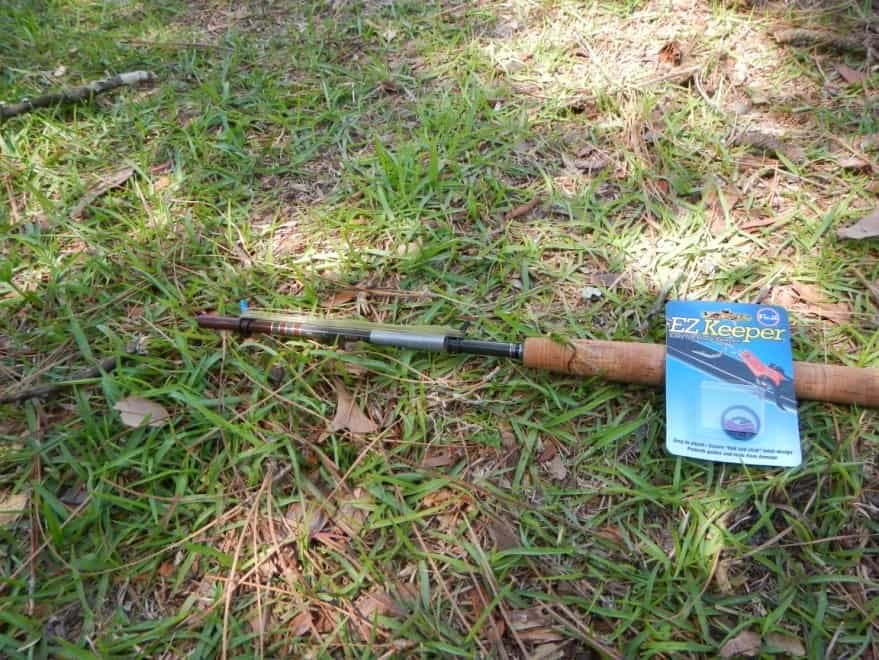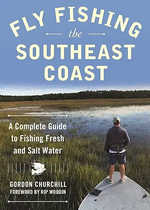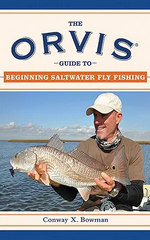A cane pole? Hardly! If you fish small mountain streams, stuffing a Tenkara rod into your backpack instantly levels the playing field and puts the new fly guy on equal footing with the most experienced fly angler. These rods are so deadly they are bound to become illegal at some point (just kidding…but only about the legal comment…hopefully…). After a few minutes of practice, a high-tech Tenkara rod eliminates most of the problems new anglers experience on small water. These include line slap, inability to achieve a drag-free drift, too many false casts, and spooked fish from unpracticed erratic hand/arm casting motions with line scattering in random directions in search of trees or other snags.
TenkaraUSA sells six different versions of Tenkara rods, each with a confusing Japanese name to add to the mystique. All are collapsible, and none use a reel with the only difference between them being their length and action. I own 11 and 13 footers and have used both very successfully. When choosing to use Tenkara, first decide whether your intended location is compatible with Tenkara style fishing. If the stream is large, wide and casts greater than 3/4 the length of the Tenkara rod, line and tippet are standard, stick with traditional fly gear.
On the other hand, if the stream is small, tight, and the typical cast short, nothing beats the effectiveness of Tenkara. If the only way to fish is to use short roll casts or dapping or you routinely curse trees for grabbing your back cast and cry as you see, the brookies scatter when your traditional fly line splats onto the water; you are in the sweet spot for Tenkara. So, 11 or 13 feet? Make your purchase based on the size of the stream/length of the typical cast and the associated trout you are sure to catch.
For small mountain water (think western North Carolina) where brookies leverage the protection of dense overhanging vegetation, and a long cast is 15 feet, stick with the 11 footer and, if you can afford it, splurge the extra 40 bucks to buy the handle that drops the length to 9 feet 4 inches. Match that up with the shorter (10.5 foot) “traditional Tenkara line” (a custom furled leader) using no more than six feet of size 5X or 6X tippet. Practice casting for a few minutes to get the hang of everything. Slight movements are essential with the flick of your wrist providing the “hurry up and stop” motion of traditional fly fishing. There are good videos on YouTube (search for “Tenkara Casting”). Combine Tenkara stealth casting with a typically cautious, low-to-the-ground approach, and the trout will not have a chance as you attack using the Tenkara soft presentation.
Play Video
The first time you watch the light Tenkara line flutter slowly to the stream to touch the water without making a ripple in contrast to the splash, however slight, produced by traditional fly line, you instantly appreciate the catching advantage. Combine the low impact presentation with the ability to hold the line off the surface with the long, light, almost invisible rod, and a drag-free drift is within anyone’s reach – even the new fly guy!
Now, for the vital school of hard knocks stuff.
Dealing with trees and vegetation. Casting an 11-foot rod in tight vegetation is tough and might put some locations off-limits unless you have a short strip of duct tape. When you encounter a situation requiring a shorter rod to work under the brush, collapse the Tenkara to the desired length, and secure it with a piece of duct tape where the handle meets the collapsed section. You can shorten the rod by several feet and still get the needed bend to work the fly. Be ready for this by wrapping a small amount of tape around the rod part of the handle section to use when needed.
Stream movement. Threading an 11-foot noodle of a rod through brush and undergrowth is an unsolvable calculus problem. Luckily, it only takes seconds to collapse the Tenkara back to 20 inches. But what about the line? You could buy TenkaraUSA’s blue wheel thing that slips over the rod and wind the line around it, or your hand, only to become frustrated with how long that takes. BackpackFlyFishing.com has a YouTube video discussing the ideal solution. Buy two EZ Keepers , intended for holding a hook on a spinning rod, slide them on the handle and wrap the line between them. You can do this much faster, keeping the line just as organized and ready for subsequent use.

Spare Tip. You are guaranteed to break your tip if you try and jerk a fly free from a snag. Assuming you cannot just reach up and free the obstruction, grab the line, not the end of the rod, and pull until the tippet breaks. If you fish without a backup rod in your pack (a fool’s choice if you walk any distance to the stream… get a seven-piece mountain pack rod), you should get a spare tip from TenkaraUSA and carry it in your Tenkara tube to keep from crunching it.
In short, going Tenkara is perfect for small water. Once you catch your first brookie, you will agree that simple is best – no need for a reel and 80 yards of fly line – spend that money on all that other stuff you think you need!



